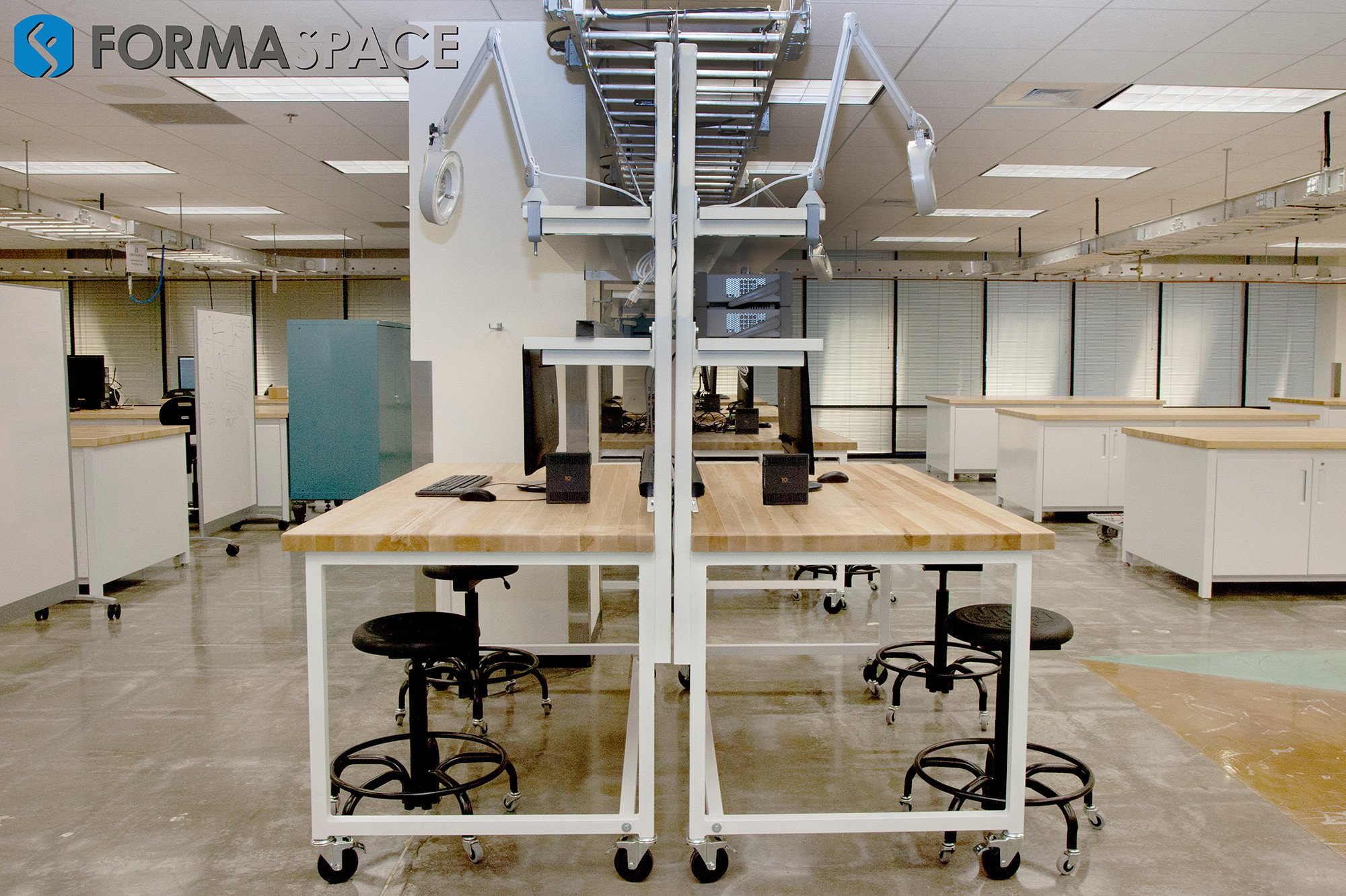How Can Federal Grants Help Fund Your Organization?
Looking for funding sources to kick start a new business, special project, or technical initiative? Federal grants may be the answer you’ve been looking for.

A Quick Primer on Federal Grants: SBIR versus STTR
A dozen major federal agencies (described in detail in the sections below) offer grant opportunities under the Small Business Innovation Research Program (SBIR) that are designed to promote technology and science-based innovations.
Funding amounts start at $150,000 and can rise to as much $1 million (or more) — albeit these higher funding amounts are often portioned over two or three phases.
Competition for these awards is intense. For example, we reported earlier that according to one statistic, only 10% of first time NIH laboratory research applicants are funded.
Nonetheless, if you have a project that matches the needs/goals of the respective agency, this can be an excellent way to help fund your projects.
Five of these federal agencies* also offer a joint academic research variation of SBIR grants, known as Small Business Technology Transfer Program (STTR) grants. Unlike SBIR grants, which are awarded directly to business organizations, STTR grants are jointly awarded to business – academic research institution partnerships working together to bring a new technology to market.
*DoD, DoE, NASA, NIH, and NSF.
Which Agencies Offer Grants in Your Area of Expertise?
To help you get started, we’ve broken the SBIR/STTR grant opportunities into seven categories to help you narrow your search. But look over all the options, as some grant proposals might (with some fine tuning) be of interest to multiple agencies.
Be aware that each agency manages its grant applications independently, with separate solicitation offers, funding guidelines, preferred aims, submission calendars, and review procedures.
Tip: As you get serious about your developing your application, see if you can get some informal feedback from a grant program manager at an agency you are considering applying to. You might glean invaluable insight on what they are looking for as well as their funding decision criteria.
1. Grants for Initiatives in Aerospace and Transportation Technology
From revolutionary new exotic materials to game-changing, AI-driven design technology, we are entering a new golden age of advancement in aerospace and space exploration.

Both NASA and the Department of Defense (DoD) solicit SBIR and STTR applications from private aerospace companies to help drive new innovation.
Meanwhile, the Department of Transportation (DoT) also sponsors SBIR grants for transportation systems, including aviation, highways, rail, and maritime technologies. Check out these recent grant awardees for more ideas.
2. NIST Grants Related to Business Commerce and Trade
Take a closer look at a Department of Commerce agency that you may never have heard of – the National Institute of Standards & Technology (NIST). It may have the grant opportunity you are looking for.
The scope of NIST’s SBIR mandate is very broad; it touches on industries ranging from biomedical and cybersecurity to software and manufacturing — all in the name of advancing business commerce.

3. Grants for National Defense and Security
You’re probably familiar with DARPA (the Defense Advanced Research Projects Agency), which has famously funded initiatives ranging from early versions of the internet to the latest in advanced robot technology. Generally speaking, DARPA is the decision-making agency responsible for awarding SBIR and STTR grants on behalf of the nation’s Department of Defense (DOD) military services. Check out the latest solicitation notices here on the DOD SBIR/STTR Small Business Portal.

When it comes to defending our nation’s borders, NOAA –with its satellite monitoring stations in space and tidal stations at sea – also plays a vital role in ocean and coastal monitoring, and in this role NOAA offers SBIR grants for promising commercial initiatives that fulfill this aspect of its mission.
But, since 9/11, the primary responsibility for protecting our nation and its land and maritime borders has fallen to the Department of Homeland Security (DHS). From time to time, it offers SBIR grants covering technology innovations spanning across a wide spectrum of activities, including:
- Border/Maritime Security Technologies
- Chemical/Biological Defense
- Cybersecurity and Software (also see NIST in the previous section)
- Explosives
- First Responders
Check out a summary of DHS awards from 2016 to get some insight into the work undertaken by grant award winners.
4. Grants for Environmental Conservation and Managing Energy Resources
The mandate of the Environmental Protection Agency (EPA) is to protect human health and the environment, so the EPA’s SBIR program generally targets science and technology-based firms promoting environmentally-friendly green technologies. They recently awarded $2.3 million in SBIR grants to 21 small businesses engaged in air quality monitoring, drinking water treatment, brownfield site cleanup, and the development of less toxic materials.

The Department of Energy (DoE) also offers SBIR and STTR grants for technologies that promote greener energy solutions, such as alternative energy sources, including wind, solar, etc.
NASA has also offered SBIR and STTR grant solicitations for environmental science and alternative energy projects as well.
Finally, the Department of Agriculture’s National Institute of Food & Agriculture offers SBIR grants that promote the use of biofuel.
5. Grants to Enhance Food Production and Protect Natural Resources
Many of same agencies in the previous section are also involved in protecting our natural resources, including the nation’s food supply.
So if your project involves technology that touches on sustainability, climate adaptation, and the like, be sure to review the grant solicitation offers from the EPA (SBIR grants), the DOE (SBIR and STTR grants), as well as NOAA (SBIR grants).
For initiatives that relate to food science and nutrition as well as specific programs for livestock, aquaculture, and forestry management, take note of SBIR grant solicitations from the Department of Agriculture’s National Institute of Food & Agriculture.

6. Grants for Research in Healthcare and Biomedicine
Grants from the National Institutes of Health (NIH) are a major source of funding for basic science research in healthcare and medicine. While most of these grants fund traditional laboratory research teams at universities and other non-profit organizations, NIH does provide funding via its SBIR and STTR grant programs for private companies.

Meanwhile, the National Science Foundation (NSF) also offers SBIR and STTR grants to kick start technological innovation in biomedicine, medical devices, computational models, and more.
Tip: Confused about the overlapping mandates of these agencies? This guide may help clarify some of the philosophical differences between the NIH and NSF – but the bottom line is, if you are involved in healthcare or biomedicine technology, you may want to look to both agencies for funding opportunities.
https://www.youtube.com/watch?v=oJSYhyJ06Wk
Learn more details about the Small Business Innovation Research Program (SBIR)/Small Business Technology Transfer (STTR) programs at the National Science Foundation (NSF) in this webinar hosted by NSF Program Director Peter Atherton.
7. Grants for Initiatives in STEM (Science, Technology, Engineering, Mathematics)
Private industry groups and the federal government agree that we need to enhance science, technology, engineering, and mathematics programs in our country to help keep our economy competitive in the world’s marketplace.
(See our two-part report on how we can encourage more women to pursue careers in STEM: part one and part two.)
Many of the federal agencies we’ve touch on earlier (NASA, DOD/DARPA, DOE) offer SBIR and STTR grants to promote STEM innovations, such as advanced material science technology.
Meanwhile, NIST has specifically targeted advancements in new manufacturing technology in some of its past SBIR grants solicitations.
Finally, when it comes to STEM Learning and Education, the Department of Education offers SBIR grants for technology-oriented learning innovations through its National Center for Education Research division.

Not finding what you are looking for?
We hope this 10,000 foot overview will help orient you in the world of federal grant funding.
To get more high-level information, visit grants.gov as well as the SBIR portal to see a current list of grant solicitations.
But wait… there’s more.
Congress has, from time to time, allocated federal grant funding to different agencies that fall outside the traditional SBIR/STTR framework.
To find these types of federal grant, visit the federal Catalog of Federal Domestic Assistance (CAFA) on the new Beta SAM website.
(Who is SAM you ask? It’s not green eggs and ham. It’s the federal System for Award Management that provides oversight over grants – in plain English, one of SAM’s main functions is to oversee grants once they are given out.)
TIP: The original SAM website is being upgraded over time, so many of its functions (as well as many legacy grant websites) are moving to its next-generation replacement, “Beta” SAM. (The bottom line? Be sure to monitor both SAM versions – old and new — for now.)
Formaspace is here to Help
If you can imagine it, we can build it.
When it comes time to build out or upgrade your research laboratory, manufacturing facility, electronics assembly factory, IT tech lab, or biomedical facility, Formaspace is ready to help.
Take advantage of our long expertise in helping Fortune 500 companies and startups – and every size of organization in-between – make their operations more efficient and cost effective with our innovative furniture solutions.
As a GSA Schedule Supplier, Formaspace can assist you each step of the way – from the facility design stage to the custom furniture manufacturing process (here at our factory headquarters in Austin, Texas), to the final onsite installation stage at your location.
We’re ready to help you next.
Take advantage of our expertise. Contact y00our Formaspace Design Consultant today.
















